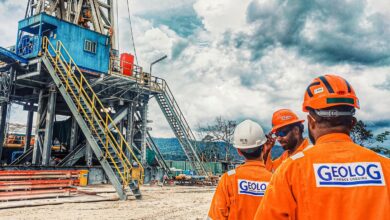Mapping the future to 2025: Drilling system automatically executes well plan, completion
By Joanne Liou, associate editor

A group of multidisciplinary experts from inside and outside the drilling industry has banded together to develop a roadmap for drilling systems automation (DSA). The DSA Roadmap Cross Industry Initiative recognizes the need for DSA and the direction – a roadmap – to reach the destination. “You can’t develop it step by step. You need a roadmap to get from here to where our future is going to be,” John de Wardt, DE WARDT AND COMPANY, stated at the 2014 IADC DSA Roadmap Workshop on 17 June in Vienna. During the workshop, Mr de Wardt shared the group’s ongoing work, and attendees discussed various automation challenges and provided feedback.
DSA aims to be a step-change innovation that will require a significant departure from business as usual. “It’s high risk, and it’s high technology. This has a critical part in enabling big value creation,” Mr de Wardt said. The vision behind the DSA initiative originated in 2012 at a multidisciplinary Drilling Systems Automation workshop and reads:
In 2025, well plans are uploaded into an interoperable drilling system that automatically delivers a quality wellbore into the best geological location, installs the casing and zonal isolation according to plan, installs the completion system according to program and updates remote operators and experts in real time to changes in the situation and identifies potential paths for success for the experts to input control.
Deep, complex wells will rely more heavily on centers of excellence onsite and remote to provide real-time and near real-time updates.
Routine multiple wells will rely on remote operations centers to monitor progress and react to alarms.
“As we work the roadmap, we revert to the vision as a target and to confirm we believe it can be achieved,” Mr de Wardt said.
The DSA aims to address safety, responsiveness, consistency, knowledge application and well costs. The group believes that there are opportunities for an automated system to respond far better than humans would be capable of, he explained. Further, the fragmented nature of the drilling industry requires a plan for interoperability and therefore a DSA roadmap, he added.
The scope of the DSA roadmap is intended to cover the full drilling and completion cycle – from spud to the well going on stream. Well planning and risk assessment defines the input. “The owner is defining the process, and then the automation is being made to automate the process. The process of the owner is not a drilling rig,” Mr de Wardt stated. “The process of the owner is well construction. That’s why we call it drilling systems.”
The hierarchical decisions support of the roadmap follows the Purdue Model, which represents multiple layers and in multiple stages of an architectural cycle. The roadmap also covers remote operating centers and remote excellence centers, two distinct centers, with one focused on operations and the other focused on “analyzing data and processing it and then feeding back how you should change things – the learning piece,” Mr de Wardt explained. Lastly, he stated that there is still much the industry has to learn about human factors engineering, the interface and relationship between the human and the automation.
Another DSA workshop similar to the one hosted in Vienna will take place prior to the IADC Advanced Rig Technology Conference & Exhibition in Galveston, Texas, in September. Click here for more information.




